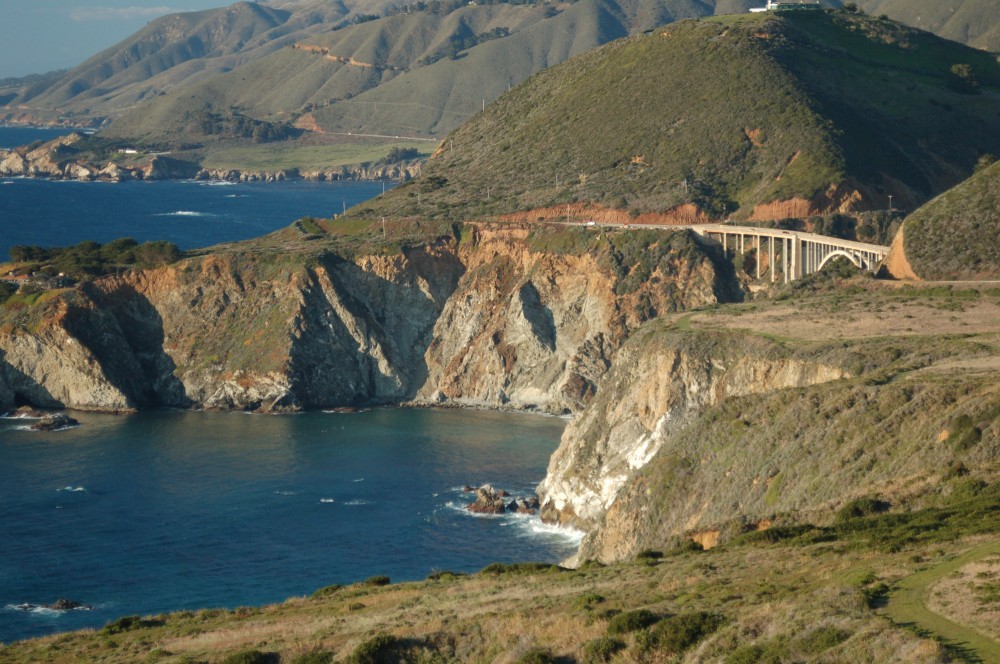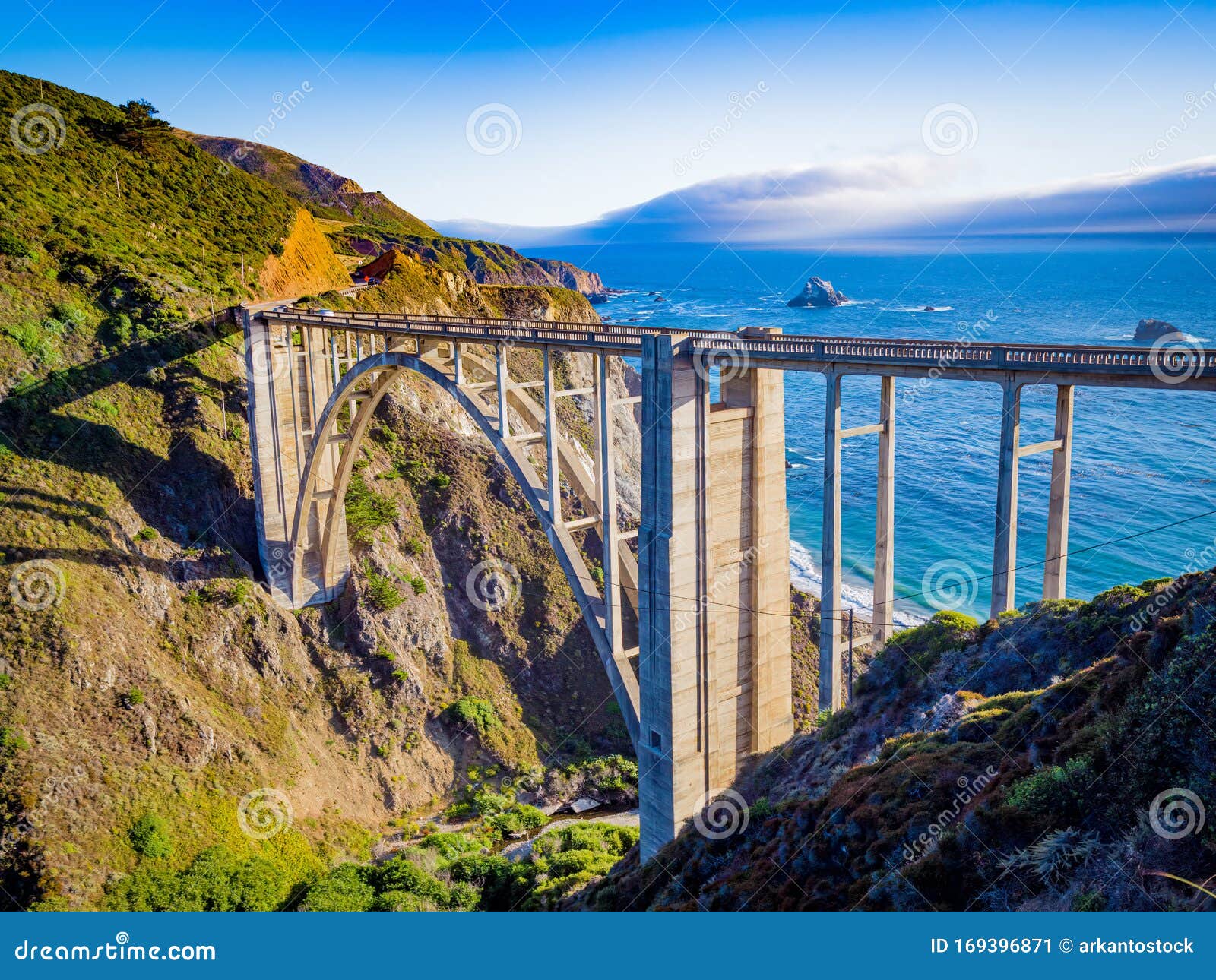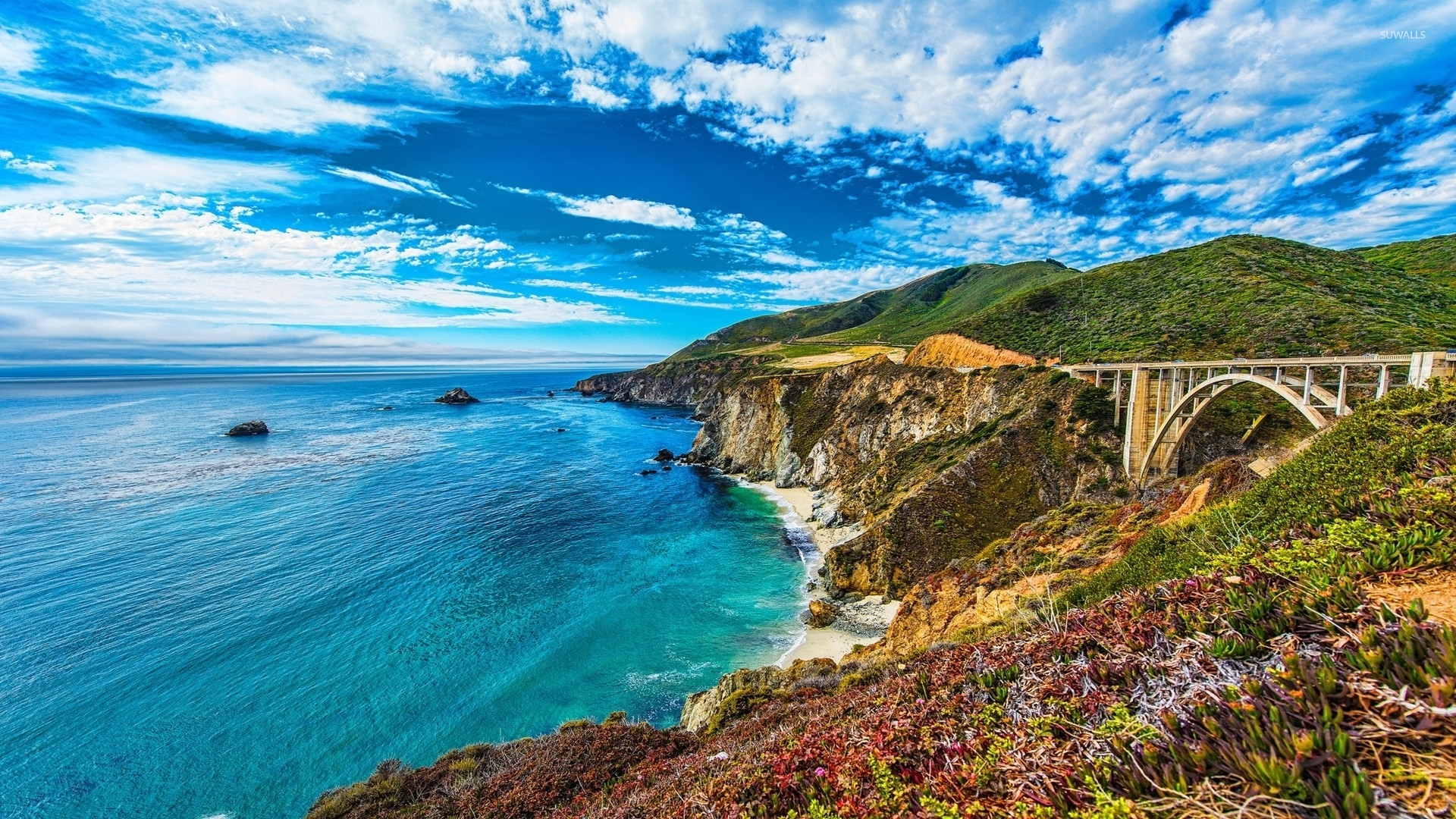Exploring The Magnificent Big Sur Bixby Creek Bridge
The Big Sur Bixby Creek Bridge stands as one of California's most iconic landmarks, attracting millions of visitors each year. Nestled along the stunning Pacific coastline, this engineering marvel has become a symbol of natural beauty combined with human ingenuity. Its breathtaking views and historical significance make it a must-visit destination for travelers from all over the world.
Big Sur itself is a region that exudes raw beauty and adventure, and the Bixby Creek Bridge serves as its crown jewel. The bridge's elegant design and strategic location create a perfect blend of nature and architecture, offering visitors an unforgettable experience. Whether you're a photography enthusiast, a road trip adventurer, or simply a lover of scenic landscapes, this bridge promises to leave a lasting impression.
As we delve deeper into the history, design, and significance of the Big Sur Bixby Creek Bridge, we'll uncover the fascinating stories behind its creation and its role in modern tourism. This article aims to provide a comprehensive guide that will not only inform but also inspire you to explore this remarkable landmark. Let's embark on this journey together!
Read also:60 Days In Nate A Comprehensive Dive Into The Reality Show Experience
Table of Contents
- History of the Big Sur Bixby Creek Bridge
- Design and Architecture
- Location and Accessibility
- Construction Challenges
- Tourism and Visitor Experience
- Safety Measures for Visitors
- Environmental Impact
- Photography Tips for the Bridge
- Maintenance and Preservation
- Future Developments
History of the Big Sur Bixby Creek Bridge
The Big Sur Bixby Creek Bridge, officially known as the Bixby Creek Bridge, was constructed in the early 1930s as part of the larger effort to connect the remote coastal regions of California. Before its completion, the area was largely inaccessible, making it a challenge for travelers and locals alike. The bridge was officially opened to the public on November 27, 1932, marking a significant milestone in California's transportation history.
Standing at a height of 280 feet (85 meters) above Bixby Creek, the bridge was one of the tallest single-span concrete arch bridges in the world at the time of its construction. Its historical significance lies not only in its engineering achievements but also in its role in opening up the Big Sur region to the rest of the world.
Key Milestones in the Bridge's History
- 1929 - Construction begins amidst financial challenges during the Great Depression.
- 1932 - The bridge is completed and opens to the public, becoming a symbol of resilience and innovation.
- 1990s - Restoration efforts are undertaken to preserve the bridge's structural integrity and aesthetic appeal.
Design and Architecture
The design of the Big Sur Bixby Creek Bridge is a testament to the ingenuity of its architects and engineers. The bridge features a stunning concrete arch that spans 320 feet (98 meters), providing both functionality and visual appeal. Its sleek lines and harmonious curves complement the natural beauty of the surrounding landscape, making it a masterpiece of modern architecture.
Architectural Features
Some of the notable design elements include:
- A single-span concrete arch that minimizes the need for support pillars in the creek below.
- Art Deco-inspired details that add an elegant touch to the structure.
- Safety railings and pedestrian walkways that enhance visitor experience while maintaining safety standards.
Location and Accessibility
Located on California State Route 1, the Big Sur Bixby Creek Bridge is easily accessible by car, making it a popular stop for road trippers exploring the coast. The bridge is approximately 120 miles south of San Francisco and 240 miles north of Los Angeles, placing it at the heart of one of California's most scenic drives.
Getting to the Bridge
Visitors can reach the bridge by following Route 1 south from Monterey or north from San Luis Obispo. Parking is available at several pullouts along the highway, allowing travelers to safely park and enjoy the stunning views. It's important to note that due to its popularity, these areas can get crowded during peak travel seasons.
Read also:Sports Nip Slips A Comprehensive Guide To Understanding And Preventing Uncomfortable Mishaps
Construction Challenges
The construction of the Big Sur Bixby Creek Bridge was no small feat. Engineers faced numerous challenges, including the rugged terrain, unpredictable weather conditions, and limited access to materials. Despite these obstacles, the team managed to complete the project in just three years, a testament to their determination and skill.
Key Challenges and Solutions
- Rugged Terrain: Workers had to navigate steep cliffs and deep canyons to reach the construction site.
- Weather Conditions: Heavy rains and foggy weather often delayed progress, requiring careful planning and adaptability.
- Material Transport: Supplies were brought in by sea and transported to the site via narrow roads, adding complexity to the process.
Tourism and Visitor Experience
Today, the Big Sur Bixby Creek Bridge is one of the most visited landmarks in California, attracting over two million tourists annually. Visitors are drawn to its breathtaking views, historical significance, and the opportunity to capture stunning photographs. Whether you're driving through, hiking nearby trails, or simply enjoying a picnic by the creek, the bridge offers something for everyone.
Activities Around the Bridge
- Photography: The bridge provides endless opportunities for capturing stunning images, especially during sunrise and sunset.
- Hiking: Several trails in the area offer close-up views of the bridge and the surrounding natural beauty.
- Picnicking: Bring a meal and enjoy the peaceful surroundings while taking in the panoramic views.
Safety Measures for Visitors
While the Big Sur Bixby Creek Bridge is a safe destination, visitors should take certain precautions to ensure a pleasant experience. The area can be windy and slippery, especially near the edges, so it's important to stay on designated paths and obey all warning signs. Additionally, parking spaces are limited, so patience and planning are key to avoiding frustration.
Tips for Staying Safe
- Wear comfortable, sturdy shoes suitable for walking on uneven terrain.
- Keep a safe distance from the edges and follow all posted safety guidelines.
- Be mindful of traffic when pulling over to take photos or park.
Environmental Impact
The construction and maintenance of the Big Sur Bixby Creek Bridge have had both positive and negative effects on the local environment. On one hand, the bridge has brought attention and resources to the region, promoting conservation efforts. On the other hand, increased tourism can lead to environmental degradation if not managed properly.
Conservation Efforts
Local organizations and government agencies have implemented various measures to protect the natural habitat surrounding the bridge. These include:
- Limiting vehicle access to certain areas to reduce pollution and erosion.
- Encouraging responsible tourism practices among visitors.
- Monitoring wildlife populations to ensure their habitats remain undisturbed.
Photography Tips for the Bridge
Capturing the beauty of the Big Sur Bixby Creek Bridge requires a combination of skill and timing. Whether you're a professional photographer or a casual enthusiast, there are several techniques you can use to enhance your images.
Best Times for Photography
- Sunrise: The soft morning light creates a warm, golden glow that highlights the bridge's details.
- Sunset: As the sun sets, the sky transforms into a canvas of vibrant colors, providing a dramatic backdrop.
- Overcast Days: Diffused light can reduce harsh shadows and bring out the bridge's textures.
Maintenance and Preservation
Preserving the Big Sur Bixby Creek Bridge requires ongoing maintenance and care. Regular inspections, repairs, and updates ensure that the structure remains safe and functional for future generations. These efforts are supported by both public and private funding, highlighting the importance of this landmark to the community.
Maintenance Practices
- Annual inspections to assess structural integrity and identify potential issues.
- Repairs and restorations as needed to address wear and tear from weather and traffic.
- Community involvement in fundraising and awareness campaigns to support preservation efforts.
Future Developments
As technology advances, new opportunities arise for enhancing the visitor experience at the Big Sur Bixby Creek Bridge. Potential developments include interactive exhibits, virtual tours, and improved accessibility features. These innovations aim to make the bridge more engaging and inclusive for all visitors, while also preserving its historical and environmental significance.
Efforts are also underway to expand educational programs about the bridge's history and the importance of conservation in the Big Sur region. By fostering a deeper understanding and appreciation for this landmark, we can ensure its legacy continues for years to come.
Conclusion
The Big Sur Bixby Creek Bridge is more than just a piece of infrastructure; it is a symbol of human achievement and a gateway to one of California's most breathtaking regions. From its storied history to its modern-day role in tourism, the bridge continues to captivate and inspire visitors from around the globe.
We invite you to share your thoughts and experiences in the comments below. Whether you've visited the bridge or plan to in the future, your feedback is valuable to us. Don't forget to explore our other articles for more insights into the wonders of Big Sur and beyond. Together, let's celebrate and preserve the beauty of this remarkable landmark!


